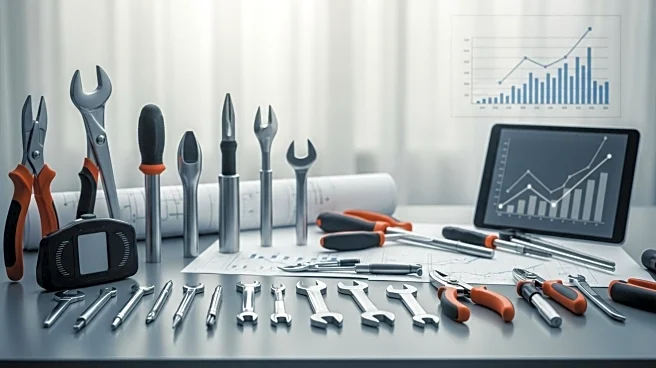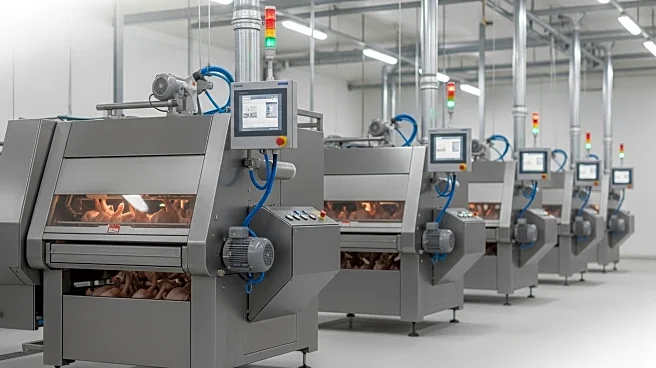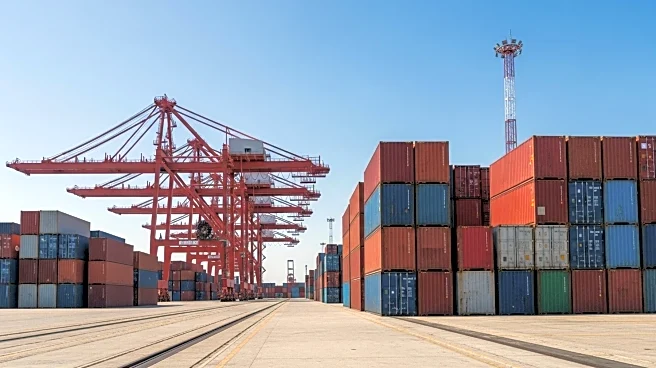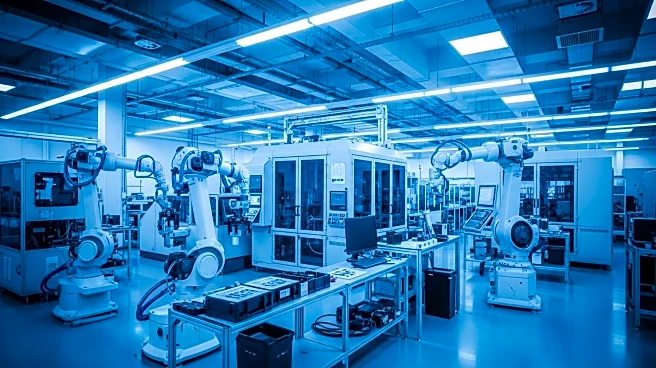What's Happening?
The Semiconductor and Electronics Industry Advisory Council (SEIAC) has unveiled a five-year action plan aimed at developing a skilled Filipino workforce to enhance the country's semiconductor and electronics sector. The plan focuses on creating a strong school-to-industry pipeline through collaboration with educational institutions and industry partners. Flexible learning pathways, such as ladderized programs and micro-credentials, are proposed to equip Filipinos with technical skills that meet global standards. The initiative also includes efforts to improve the investment climate and promote the Philippines as a competitive hub for semiconductor manufacturing.
Why It's Important?
This initiative is crucial for the Philippines as it seeks to strengthen its position in the global semiconductor market. By developing a skilled workforce, the country can attract more foreign investment and increase its competitiveness. The focus on education and industry collaboration highlights the importance of human capital in driving economic growth. The plan's emphasis on diversifying export destinations aligns with global shifts in supply chains, reducing reliance on traditional markets. This could lead to increased economic resilience and job creation in the Philippines.
What's Next?
The SEIAC will continue to refine its action plans, with a focus on aligning government agencies to support the semiconductor sector. The council plans to participate in SEMICON Europa 2025, showcasing the Philippines' capabilities to a global audience. This strategic move aims to diversify export markets and align with Europe's demand for alternative suppliers. The development of Strategic Economic Zones and infrastructure improvements will be key to attracting investment. The success of these initiatives will depend on effective implementation and collaboration between government, industry, and educational institutions.
Beyond the Headlines
The SEIAC's plan raises broader questions about the role of education in economic development and the need for countries to adapt to changing global markets. By prioritizing technical skills and industry collaboration, the Philippines is positioning itself to capitalize on emerging opportunities in the semiconductor sector. This approach could serve as a model for other developing countries seeking to enhance their competitiveness. The focus on local talent development also highlights the importance of retaining skilled workers, which is critical for sustainable economic growth.










